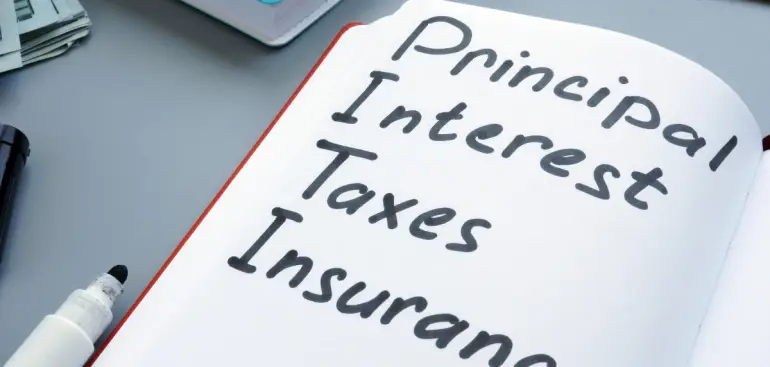If you’ve looked at even a few houses online, you’ve seen the mortgage payment calculators that are on every home sales website. Are these mortgage payment estimates accurate, and can they help to tell you whether you can afford to buy the house or not? It turns out there’s a lot more to buying a house and making monthly house payments than some of the simple mortgage calculators can indicate. One of the mortgage business insider terms you could hear is “PITI.” Understanding what PITI means can help you to understand what you really can afford, and how much your monthly house payment is likely to be — or what could be potential changes or exceptions.
What does “PITI” stand for in the home loan and mortgage business? PITI is an acronym that stands for “Principal, Interest, Taxes, and Insurance.”
So, how do these payments work?
First, the principal represents a portion of the amount you’re borrowing to pay for the house you want to buy. Interest represents the portion of your house payment that pays the interest the lender is charging on your loan.
For a 30-year fixed rate mortgage or a 15-year fixed rate home loan, the monthly payment stays the same over the course of the loan. But when the loan starts out, you pay primarily interest. Over time, you will pay higher amounts of principal, and lower amounts of interest. That is how people who have had mortgages for a long time pay down the mortgage, and build equity in their home.
Taxes and insurance will vary depending upon your home’s purchase price, and the mortgage insurance (MI) you will be asked to pay. This amount varies depending on the type of loan you have and its requirements. FHA loans, for example, will always include a mortgage insurance payment. If you are able to put 20% or more as a down payment, you may be able to find mortgage loan programs that don’t require mortgage insurance.
Property taxes will vary and they are calculated based on the purchase price of your home. You may also have Mello-Roos taxes in California, which are taxes related to bond initiatives in specific areas that are paid off over time. You lender will collect these funds and remit them on a schedule to the proper government authorities.
So, your monthly house payment will really be made up of four different payments: mortgage principal, mortgage interest, mortgage insurance, and property taxes. Those are the elements of “PITI.”
Sources
https://www.lendingtree.com/home/mortgage/piti/
Plus personal knowledge



